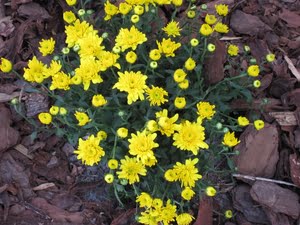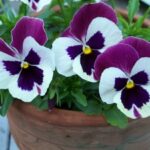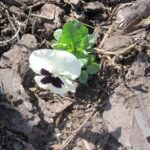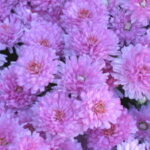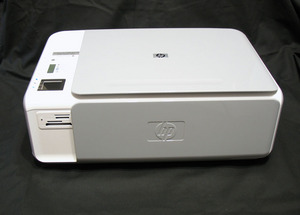So Many Bark Mulches to Choose From – “Will you be needing any soil, amendments or bark mulch with your purchase today?” I asked the customer standing at the counter in front of me as I rang up his purchases of pansies and mums. Bark mulch? A blank, panicked expression ran across the man’s face as if he had forgotten to study garden bark mulch in his SAT prep. Here he thought he was at the home stretch having purchased all the plants on his wife’s honey do list and now I was quizzing him about his garden bark mulch needs.
How to Choose a Garden Landscape Bark Mulch
To avoid holding up the line at the garden center or having to search for a customer service representative to help you with selecting a garden landscape bark mulch, let me walk you through how to choose the bark mulch that is best for your garden. You’ll learn how to select the bark mulch that is best for your plants and most economical. Rather than a bark mulch tutorial running down all the different kinds of bark mulch available, instead I’m going to ask you the kinds of questions that I would typically ask a customer to help them select the bark mulch that’s most appropriate for their situation.
Are Your Applying Bark Mulch to An Area With or Without Plants?
One example is a tree box where a tree has been removed but you just want it to look neat and tidy. In this case, you can just go ahead with applying shredded hardwood mulch which will be the cheapest bark mulch available and is commonly used on most street plantings. If you prefer the look of a pine mini nugget or larger nugget or a colored red/black bark mulch, it will cost a little more but you can go ahead and do so. You can even consider applying stones instead of bark mulch such as all purpose gravel which are tiny pea gravel sizes or white marble chips.
Can You Use Shredded Hardwood Bark Mulch With Plants?
Yes, you can. Shredded Hardwood Bark Mulch is often used by many landscapers because it is the cheapest and provides excellent coverage. However, besides helping to minimize weeds and prevent soil erosion, shredded hardwood bark mulch provides little nutritional value to the soil. Plus depending on where you purchase shredded hardwood, there are often great variations in the quality of this bark mulch. I would spend the extra buck or two to get a pine bark mulch instead.
Do You Have Acid-Loving Plants?
For plants like azaleas, camellias, rhododendrons and gardenias, I would recommend a pine bark mulch. When pine bark mulch breaks down over time, the bark mulch is slightly acidic which plants appreciate to amend the soil which helps to create the right soil pH for plants to receive nutrients. Pine bark is available as fine pine, shredded bark, in mini or large nugget chips or chunks. Which size is best? At this point, just choose the look of the pine bark mulch you prefer. The second criteria for selecting bark mulch is how often you’re prepared to replace it. The larger the bark mulch size, the less frequently you’ll have to replace it but the advantage of using say fine pine is that it breaks down quickly within one season but adds nutrients at the same time.
Bark Mulch For Other Plants?
For all other plants, any of the pine bark mulches will suffice. However for roses, you want to avoid pine bark mulches and just use shredded hardwood, cedar or cypress mulch. Instead of mulching with a bark mulch, with roses, you can simply apply a manure/humus mixture or manure topped with leaf compost.
What About Colored Bark Mulches?
You can get a rich black dyed bark mulch or a red dyed cedar mulch. The advantage of the black dyed mulch is that it looks freshly applied, as if recently hosed down. Scott’s sells a color enhanced bark mulch called Naturescapes Classic Black with “color-guard” and a guarantee which promises season-long color that won’t fade to gray. Scott’s also touts a 100% weed-free guarantee. I’ve only seen black dyed bark mulch shredded but red dyed bark mulches can be found shredded or in chips or chunks. While attractive, these dyed bark mulches are certainly not the most environmentally friendly, organic picks with dyes being leached into the garden and groundwater. Some of the red bark mulches are dyed cedar which have the advantage of being insect resistant.
Are Your Applying Bark Mulch Near the House?
Many people have garden beds right up against the house but there is always a risk of attracting termites once you apply mulch right up to any wooden foundation. If you feel you must apply bark mulch, consider instead applying pebbles or stones. You can also try natural cedar which is going to be more expensive than other bark mulches but has natural insect repelling qualities — think cedar chest. But keep in mind cedar bark mulch is not entirely insect proof.
How About Rubber, Playground Rubber Mulches?
Recycled tires and other industrial rubber by-products have been made into kid-friendly rubber playground mulches with some rubber mulches even dyed in fun yellow, red and blue colors. They are softer and more amenable than wood bark mulches to kids falling down if you don’t want them to get dirty. However, if you’re doing organic gardening, these pseudo bark mulches are inappropriate. Plus, I hesitate to recommend these faux bark mulches because of my own personal reservations about possible chemicals outgassing and leaching into the soil
What About Specialty Bark Mulches?
There are specialty bark mulches like licorice root, cocoa mulch and pine straw which will be premium priced. If you’ve never used these before, I would avoid the unnecessary expense. But if you would like to try, consider buying one or two bags of bark mulch and applying in a separate area to gauge how they work in your garden. Cocoa mulch which is lovely to apply, smells like chocolate but is not appropriate in gardens with dogs as they could ingest the mulch and get sick. Pine needle or pine straw mulch is more readily and common in the South and is wonderful to mulch plants, tucking them in before Winter but needs to be removed in the Spring. Straw or hay can be used to mulch but is not especially attractive, often has seeds and has to be removed in the Spring.
How Many Bags of Bark Mulch Do I Need?
Before you go to the garden center, get a measuring tape out and measure all the areas you’ll need bark mulch. When I would ask people how many bags they would need, people would say “You know, your typical back yard”. This could mean many things. Some people have a typical small square garden, others a long thin garden, while others would have huge corner lots. Most bark mulches will have coverage information printed on the bag. You only need to apply bark mulch about an inch thick. A 3 cubic foot bag will cover roughly 9 square feet to the depth of about 1 inch, that’s 3 feet by 3 feet or an area about the size of a city tree box. Err on the side of purchasing less than more as you can always go back to get extra bags of bark mulch and it’s a hassle returning bags. But generally, most of the time, you’ll probably end up using more than you expect.
Free City Bark Mulch
Sometimes cities will offer free bark mulch made from chipped up Christmas trees and other garden refuse. I would avoid this bark mulch whenever possible as you don’t know the quality and often the mulch has not been adequately composted so it will quickly rob the soil of Nitrogen needed to nourish plants. This chippy bark mulch is often riddled with weed seeds. However, it is appropriate for garden paths where you just need area coverage.
A Word About Prices of Bark Mulches
When doing price comparisons of bark mulches, keep in mind quality and quantity. Many of the big box stores sell 1.5 cu foot and 2 cu foot bags to keep the price down. Many garden centers often sell larger 3 cu foot bark mulch bags. So include this in your calculations when comparing prices of similar bark mulches. Ask if you can see a sample. Many garden centers have samples of their bark mulches on display for customers to view or there may be broken or torn bags where you can view the contents inside. You want to check for uniformity in the way the bark mulch has been processed. Occasionally, you may get a random bag that somehow missed the chipper, but generally, the more premium bark mulches have a nice, evenly sized bark mulch. You can also check with the garden center manager to see if they’ll give you a 2 for 1 deal on any torn or ripped bags of mulch but don’t wangle a deal and then expect extra service or empty bags to load ripped bags of mulch. Have your own empty garbage bags at the ready.
Delivery of Bark Mulches
When purchasing bark mulch, check if they have someone loading the vehicles or if it’s self-service. Many a time I’ve had people come on a busy weekend and open up their trunk filled with junk looking at me expectantly as if I would somehow also throw in a free car trunk cleaning service. Clear out your back seat or trunk before you get to the garden center. Either bring a blanket or ask if there’s plastic available if you don’t want the interior of your car to get dirty. It’s worth paying a little extra at a garden center to save your back if someone else is loading your vehicle and do consider tipping the person who loads your garden bark mulch. The other splurge that is worthwhile is to have bark mulch delivered directly to your house. Many garden centers charge $25-$50 to have mulch delivered by the bag. Bulk bark mulch is only appropriate for huge new home construction or when you’re overhauling an area as you have the added inconvenience of having to keep loading a wheelbarrow to move around the bark mulch.
